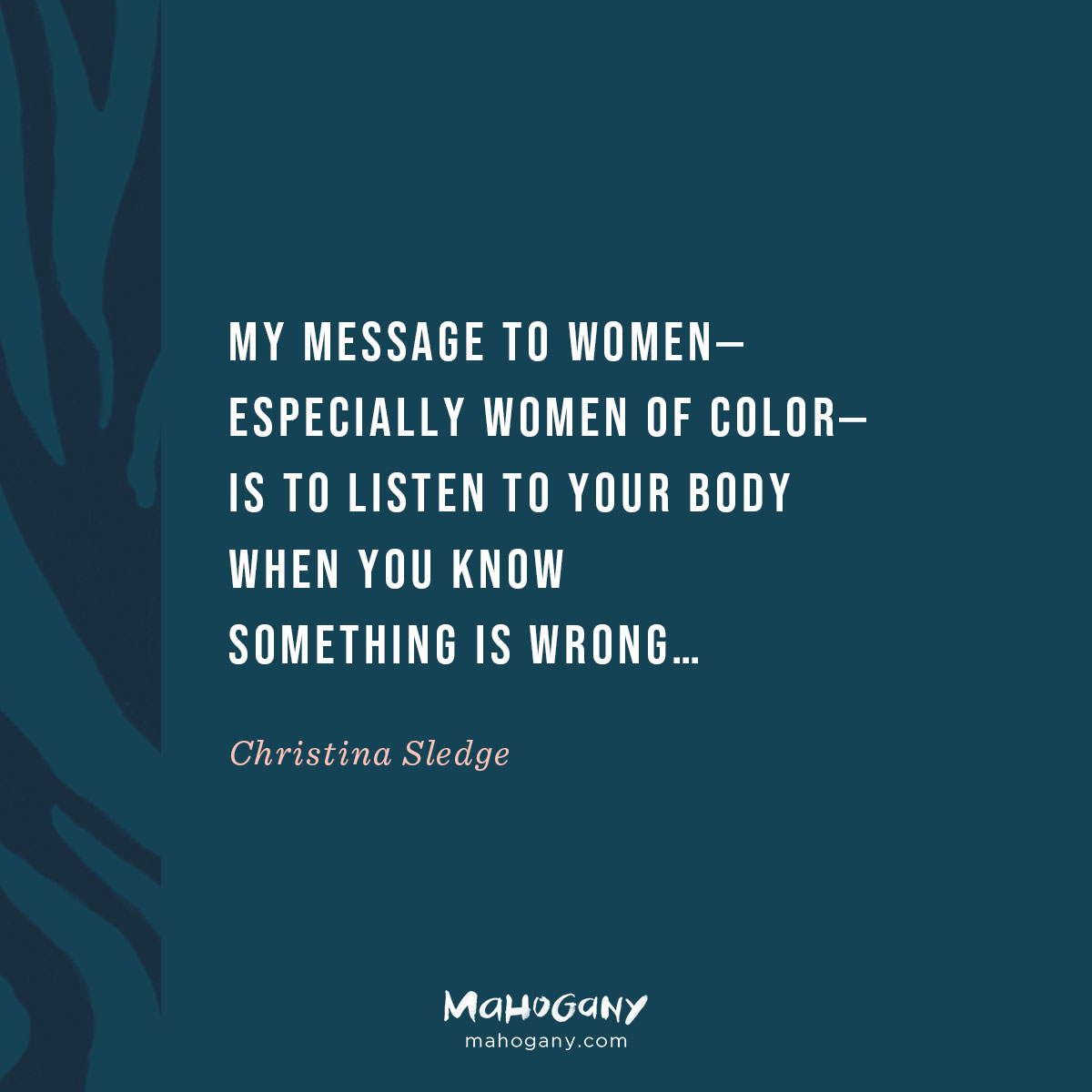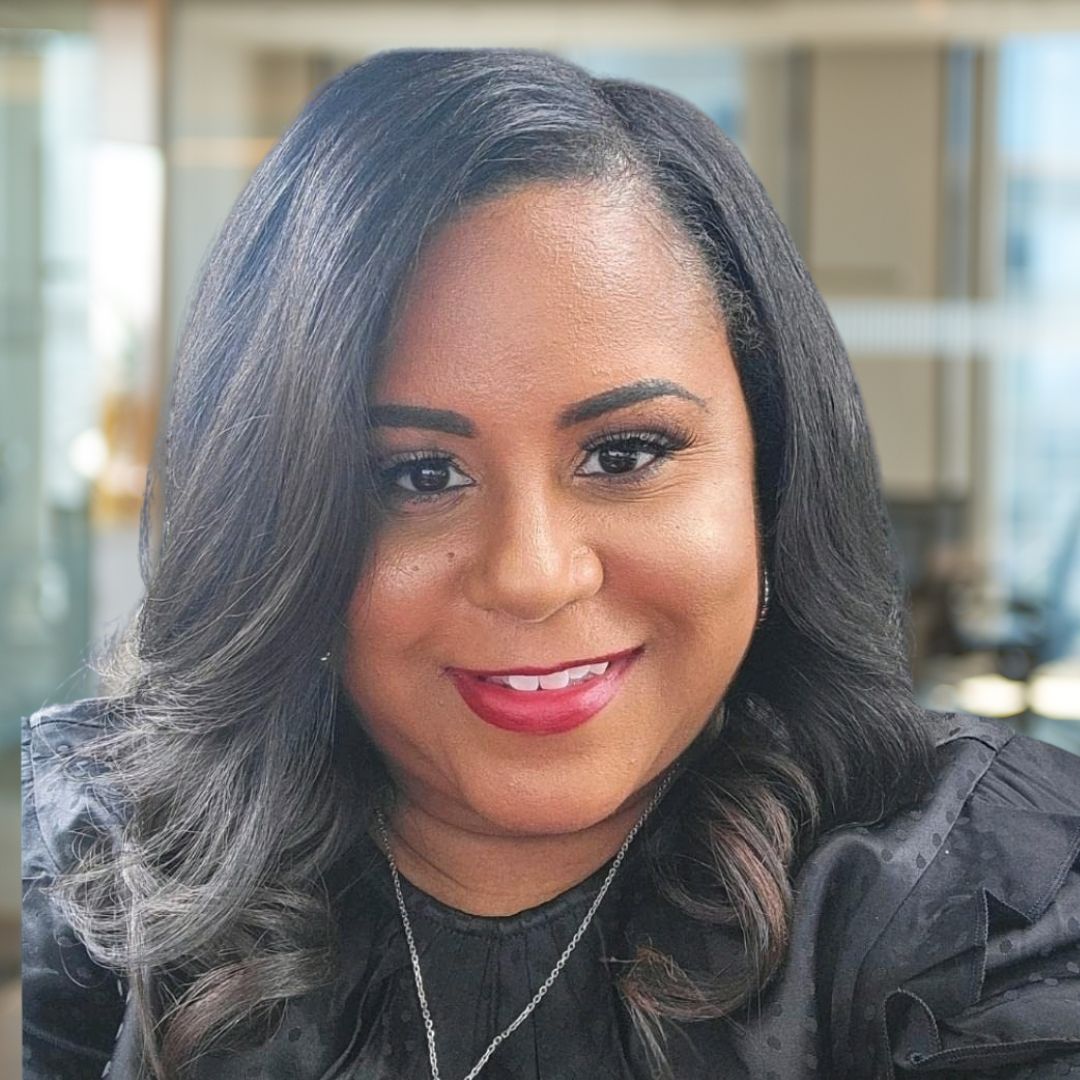I am writing this while going through uterine fibroid flare-ups. It feels like labor contractions or the worst cramps you can possibly imagine. I learned that I had uterine fibroids in 2003 when I was 25—two years after giving birth to my daughter. Fibroids are benign growths, usually in a woman’s uterus, and most women of color have them. My gynecologist told me my fibroids were the size of almonds, so I ignored them.
I didn’t think about my fibroids again until my second pregnancy at 30 years old in 2008. It was a high-risk pregnancy because of where the fibroids were located; I also had placenta previa and gestational diabetes. I gained 50 pounds during my pregnancy and was put on bedrest from five months until I gave birth to my daughter. She was born healthy by cesarean section during my eighth month of pregnancy. After that I had my tubes tied (tubal ligation) to prevent future pregnancies because I could not go through high-risk pregnancy again.
Before and after my first pregnancy, I was 5’3” and a petite size 4. After the second pregnancy, I returned to a healthy weight and size 4 and even frequently ran 5k races to stay active. Although I was diagnosed with prediabetes as a result of my prior gestational diabetes diagnosis, I was able to maintain my weight with healthy diet and exercise to prevent diabetes.
Years later in 2016 when my brother was murdered, I suffered with grief and stopped exercising. I began to struggle with my weight and a series of stressful situations—on and off for about 7 years. I gained 50 pounds and went up to a size 12/14. I attributed my growing pooch in my uterus area to being overweight and didn’t give it a second thought when my belly began protruding as if I was about 5-6 months pregnant.
I started having extremely heavy periods. I correlated it to turning 40, not to the fibroids unknowingly growing in my uterus. I also had forgotten that uterine fibroids ran in my family. My mother had fibroids; my great-grandmother and my grandmother had hysterectomies because of fibroids. I kept up with my yearly well-woman visits with no alarm bells from my GYN.
But I became self-conscious of my big belly. I hid it with bigger blouses and tops; I started wearing leggings every day. I continued to self-diagnose and suffer from occasional sharp, contraction-like pain (which I later found out to be “fibroid flare-ups”). When my periods got even heavier, I made an appointment with my GYN. She was my doctor during my high-risk pregnancy, so I trusted her expertise. (By the way, she was not a uterine fibroid specialist.) She told me that my periods were ‘not heavy’ because I wasn’t soaking through a pad per hour. She said I just needed to lose weight and asked me if I ‘hated walking or something’. So, I continued to ignore my symptoms.
From 2018 to 2021, I started having digestive issues: constipation, gas, and excessive bloating. I even had two unnecessary colonoscopies. My gastrologist ordered an ultrasound on my abdomen to see if there were any obstructions or blockages. I told the ultrasound tech that the pain was in my pelvic area not my abdomen. “That’s for your GYN to check out,” she said. My self-diagnosis of bowel and digestive issues were actually symptoms of the real issue: uterine fibroids. Finally in May of 2023, after my sister shared with me that she’d had uterine fibroid issues for years, I made an appointment to see a new GYN.
My new GYN ordered an ultrasound, and she discovered that my fibroids had grown to the size of large grapefruits or softballs! That’s why I looked and felt pregnant! They were pushing on my bladder and bowel area. Since fibroids can cause fertility issues and I was not interested in having more children (my tubes were tied for 15 years and I am 45), my GYN suggested a hysterectomy.
I was slightly reluctant, but then I remembered how long I suffered. I researched and sought a second opinion. It helps that my husband is super supportive of my decision to proceed with the surgery. He understands the pain and suffering I’ve been enduring.
I am extremely happy with my decision to have a hysterectomy. I know it’s not the best choice for every woman, but it’s the right choice for me. Writing this while actually enduring the flare-up was cathartic. My message to women—especially women of color—is to listen to your body when you know something is wrong; be your own advocate, even if doctors tell you otherwise; educate yourself on your ailment or diagnosis; and be sure to seek a second opinion.
Under no circumstances should you self-diagnose or ignore your symptoms or pain for so many years like I did. It is unacceptable for our symptoms to be ignored. Self-care is also listening to your body.
Leave a Comment



Just woke up on a cloudy Monday morning in October! After acknowledging my Lord and Savior, I reach for my phone and focus on 2 things: 1) a greeting from an interesting Black Male and 2) I see the Mahogany E-mail. I read Christina’s story from beginning to end. Currently I am not a patient of fibrosis but can identify with severe pain when I had a cycle. Now at 62 and seeking a second career, I want to thank her for sharing her Truth.
Thank you, Rev. Clara. I’m so happy to hear my story resonated with you. That was my goal to spread the word. Be blessed!
Great article! Pray that you heal quickly.
Thank you, Cassandra! I appreciate your kind words.
In late 2009 I began having very heavy periods. By February of 2010 they were so heavy I stopped going out because I was bleeding through super tampons and pads every half hour. Trying to work was a nightmare. After a trip to my OBGYN and a dnc he discovered my uterus was filled with fibroids. March 2010 I had a total hysterectomy. Best decision ever made. I was healthier and saving a lot of money not buying feminine products!
Hi Janice, thank you for sharing your brave journey! I am so happy you no have relief and a better quality of life.